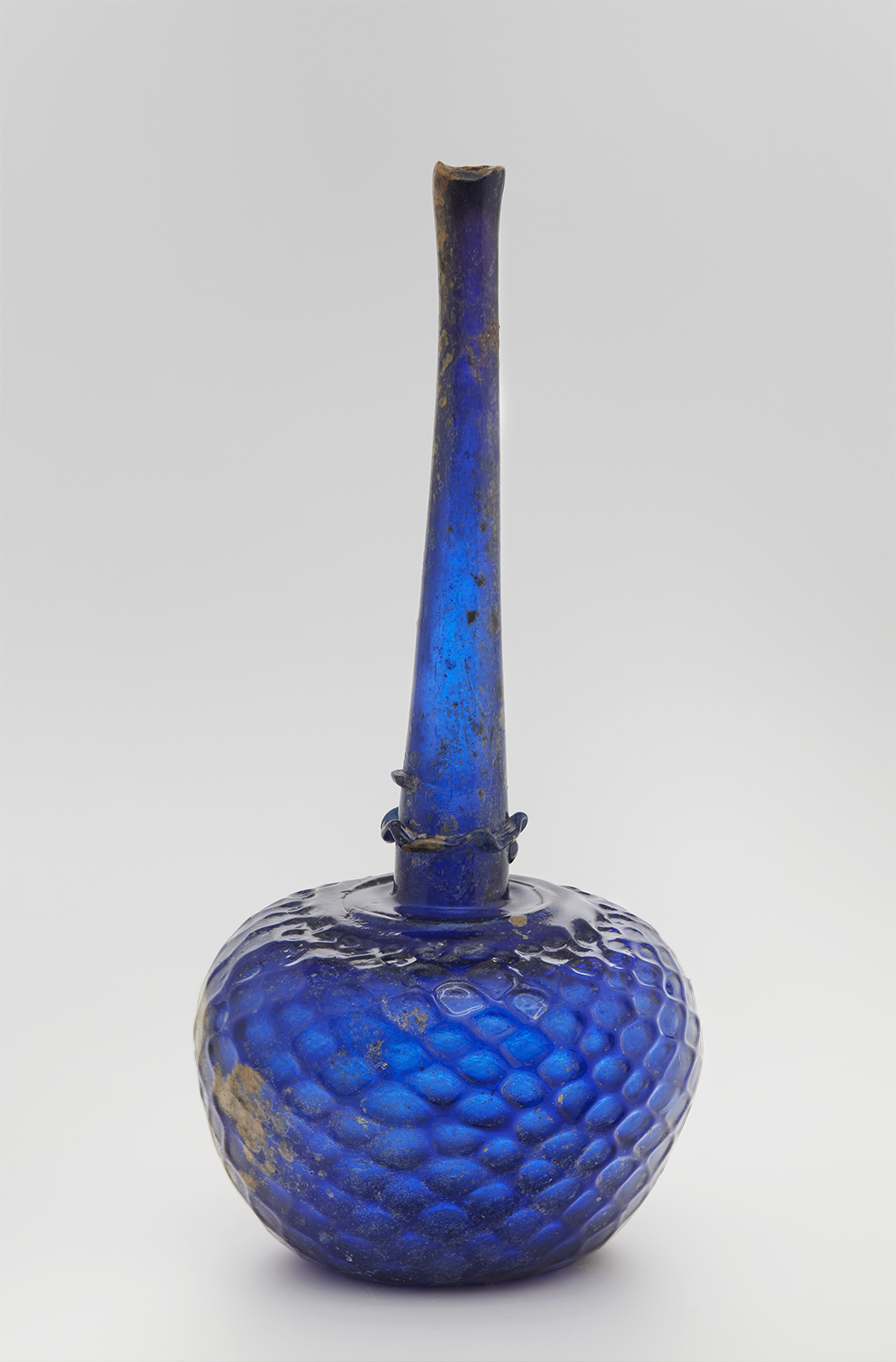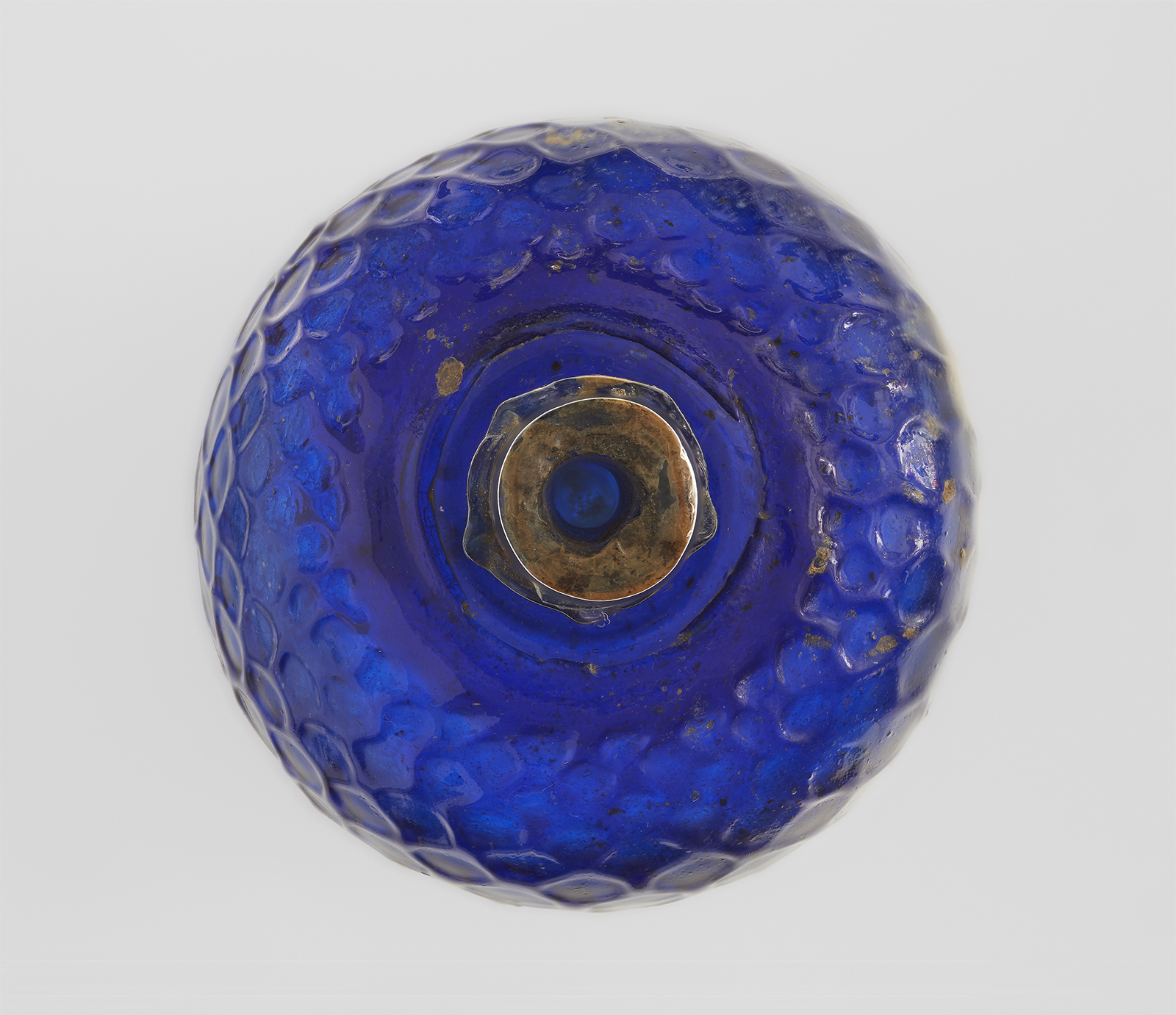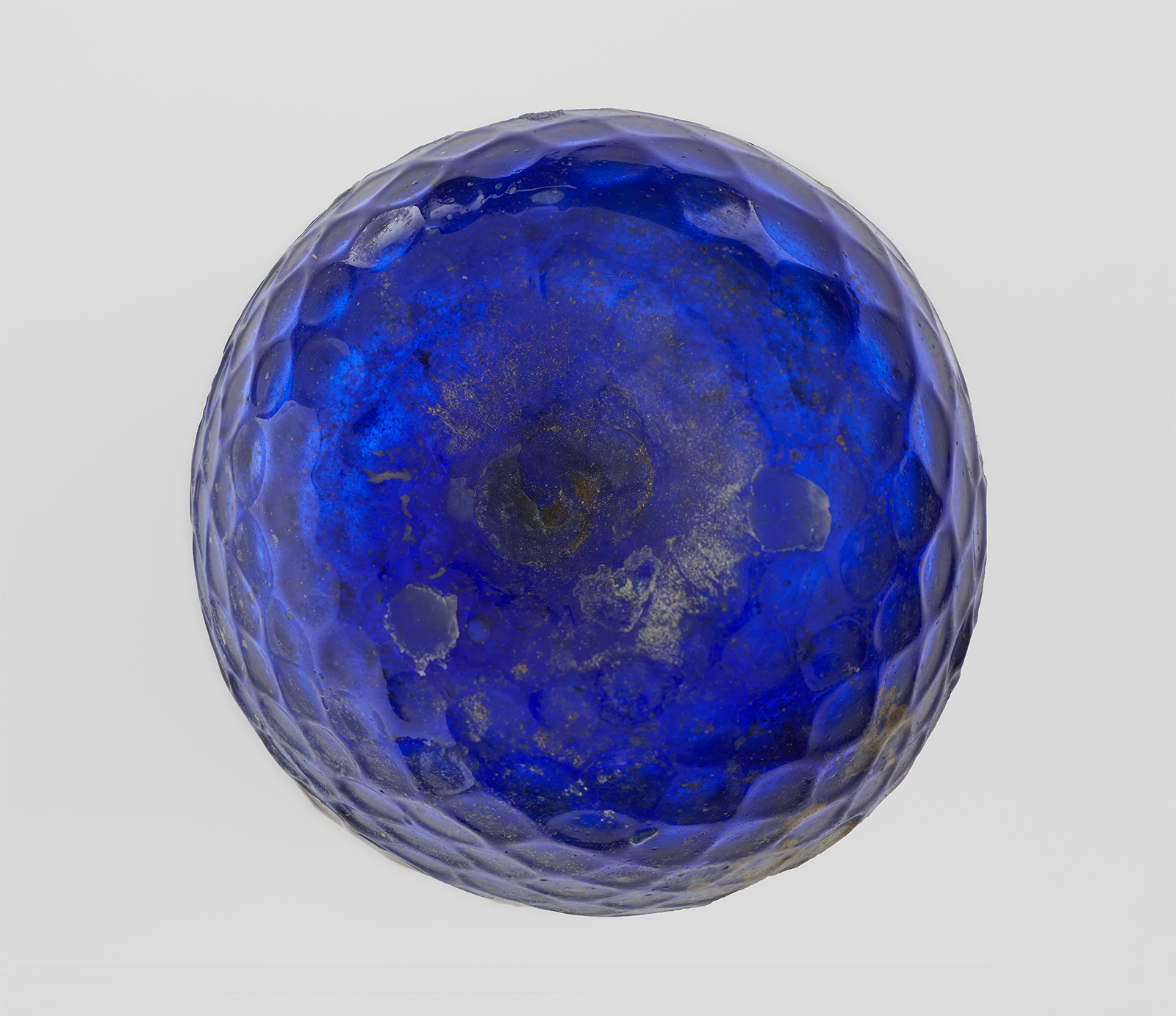Click on the image to zoom
Bottle
- Accession Number:AKM658
- Place:Iran
- Dimensions:24.2 cm x 13 cm
- Date:11th–first half of 13th century
- Materials and Technique:glass, transparent deep blue, pattern moulded, blown in the half-post technique; applied thread decoration; tooled; worked on the pontil
On its a globular body, this bottle features a honeycomb pattern that was common to glass vessels produced in the Near East throughout late antiquity and the Islamic period until the end of the 13th century. Numerous examples of patterned bottles can be found in all major collections of Islamic glass.[1] They can be distinguished by the details of their pattern, their necks, and their applied parts as well as their measurements and the glass colours used. The deep blue colour of this bottle is quite unique, as surviving bottles of this type are most often colourless, light green, or yellow.[2]
Further Reading
In its most popular form the honeycomb pattern was achieved by blowing the glass into a one-part mould so that the pattern would clearly show on the vessel. In rare occasions, blowing a particularly large body could render the honeycomb pattern less visible.[3] A prominent seam on the shoulder of this bottle hints at the use of the half-post technique in which the neck was joined together with the moulded body of the vessel.
Bottles with mould-blown patterns were often decorated with glass threads applied around the base of the neck. Such threads can be seen on this bottle’s long, elegant neck. To add the glass threads, a pontil would have been applied to the bottom of the bottle to do the manipulating work on the vessel. After the pontil was cracked off, a pontil mark remained.
The glass of this bottle’s neck becomes thinner toward the rim and has received a straight cut. The necks of other bottles bulge and display a flared opening. While the vessel’s function would likely influence this shape, it remains a mystery how most bottles were closed since the vast majority survived without stoppers. A notable exception is a number of wheel-cut bottles with specially made silver caps to close their necks. Many of these caps have been destroyed and are only visible through the stains on the glass.
Long-necked bottles with honeycomb patterns seem to have been most popular in the region of Iran during the 11th to 13th centuries. Other vessel types are known from the Egyptian and Syrian region (see AKM656), and though vessels with honeycomb patterns appear among the cargo of the Serçe Limanı shipwreck of around 1025, they are different in character and type.[4] Other typical patterns for glass bottles—which also largely appear in the Iranian region—include horizontal scrolls, spirals, or circular motifs.[5] Although our knowledge about their use is very incomplete, it is possible that many were used as sprinklers for perfumed water and may have been traded over long distances to those parts where the bottles contents were not produced.
— Jens Kröger
Notes
[1] Kröger, 89–90, no.76; Carboni, 236–237, cat. 66; Carboni and Whitehouse, 95–99, nos. 21-26; Goldstein 255, no. 295; Whitehouse, 99 no. 776.
[2] Carboni and Whitehouse, no. 26. Carboni, 228–229, no. 62.
[3] Kröger, 101–102, no. 84–85.
[4] Bass et al., 214–221 (bubble-rim bottles) and 309–319 (globular jars).
[5] Carboni and Whitehouse, 95, no. 21, 97, no. 23; Kühn, 150–151, no. 44.
References
Bass, George F. et al. Serçe Limanı, Volume II: The Glass of an Eleventh-Century Shipwreck, College Station: Texas A&M University Press, 2009. ISBN: 9781299053748
Carboni, Stefano. Glass from Islamic Lands. The Al-Sabah Collection. Kuwait National Museum. New York: Thames and Hudson, 2001. ISBN: 9780500976074
--- and David Whitehouse, with contributions by Robert H. Brill and William Gudenrath. Glass of the Sultans. New York: The Metropolitan Museum of Art; Corning, NY: The Corning Museum of Glass; Athens: Benaki Museum; New Haven: Yale University Press, 2001. ISBN: 9780300088519
Goldstein, Sidney. Glass From Sasanian Antecedents to European Imitations, Nasser D. Khalili Collection of Islamic Art XV. London: The Nour Foundation in Association with Azimuth Editions, 2005. ISBN: 9781874780502
Kröger, Jens. “Glas," Islamische Kunst: Loseblattkatalog unpublizierter Werke aus deutschen Museen, Vol. I. Mainz am Rhein: Verlag Philipp von Zabern, 1984.
Kühn, Miriam with contributions by Andrea Becker and Jens Kröger. Vorsicht Glas! Zerbrechliche Kunst 700–2010. Berlin: Museum für Islamische Kunst - Staatliche Museen zu Berlin, 2010. ISBN: 9783938832691
Whitehouse, David. Islamic Glass in The Corning Museum of Glass, Vol. II, Corning, NY: The Corning Museum of Glass, Corning, 2014. ISBN: 9780872901995
Note: This online resource is reviewed and updated on an ongoing basis. We are committed to improving this information and will revise and update knowledge about this object as it becomes available.






